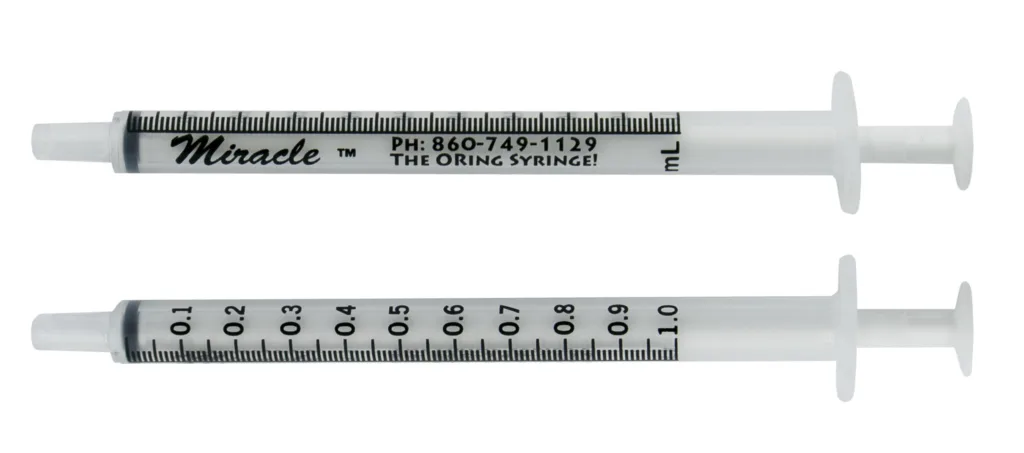When it comes to measuring liquids, milliliters (mL) is a commonly used unit of measurement. In the medical field, mL is often used to measure the amount of medication or fluids that are administered to a patient. One mL is equivalent to one-thousandth of a liter, which is a standardized unit for measuring volume in the International System of Units (SI).
However, when it comes to measuring insulin, units are used insead of milliliters. Insulin is a hormone that is produced by the pancreas and is responsible for regulating the amount of glucose (sugar) in the blood. For people with diabetes, insulin injections are often required to regulate their blood sugar levels.
Insulin syringes are designed to measure insulin in units, rather than milliliters. The concentration of insulin is the number of units of insulin in one milliliter (mL). Insulin vials and pens commonly have a concentration of 100 units in 1 mL (100 units/mL), which is called U-100. This means that one mL of insulin contains 100 units of insulin.
To measure insulin using a syringe, it is important to choose a syringe that is designed for insulin and has the correct capacity. A 1 mL syringe is commonly used to measure insulin, as it can draw up to 100 units of insulin. The syringe is marked with lines that indicate the number of units of insulin that are being drawn up.
It is important to use the correct syringe and to measure insulin accurately, as incorrect dosing can lead to complications and health problems. It is also important to follow the instructions of your healthcare provider when administering insulin, as dosing may vary depending on individual factors such as age, weight, and the type of diabetes.
One mL is equivalent to one-thousandth of a liter and is a commonly used unit of measurement for liquids. However, when it comes to measuring insulin, units are used instead of milliliters. A 1 mL syringe can draw up to 100 units of insulin, which is commonly used in insulin vials and pens that have a concentration of 100 units/mL. Accurate dosing is important when administering insulin, and it is important to follow the instructions of your healthcare provider.
What is the Equivalence of 1 Unit in ML?
One unit of alcohol is equal to 10 millilitres (ml) of pure alcohol. This means that if you have a drink that contins 10ml of pure alcohol, it is considered one unit. It is important to note that different drinks have different alcohol strengths, so the volume of the drink needed to contain one unit will vary accordingly. For example, a standard 175ml glass of wine (12% ABV) contains 2.1 units of alcohol, while a single measure (25ml) of spirits (40% ABV) also contains one unit of alcohol. In terms of safe drinking guidelines, it is recommended that men and women do not regularly exceed 14 units per week. It is also recommended to spread the units over the course of the week and have at least two alcohol-free days each week.

Number of Units in a 1 ML Syringe
A 1 mL syringe is a commonly used medical tool for administering medication. It is important to know how many units of medication a 1 mL syringe can hold, as this will help ensure the correct dosage is given. Generally, a 1 mL syringe can hold up to 100 units of medication. It is important to note that different types of medication may have different concentrations, so it is always important to consult with a healthcare professional and carefully read the medication label before administering any medication.
Conversion of Milliliters to Units of Insulin
Insulin is a hormone that is used to treat diabetes by regulating blood sugar levels. The concentration of insulin is measured in units per milliliter (mL). The most common concentration of insulin is 100 units/mL, which is also known as U-100. This means that tere are 100 units of insulin in one mL of liquid.
It is important to note that there are other concentrations of insulin available, such as U-40 and U-500. U-40 insulin has 40 units/mL, while U-500 insulin has 500 units/mL. These concentrations are less common and are typically used in specific situations.
When administering insulin, it is essential to use the correct concentration to avoid dosing errors. Insulin vials and pens are labeled with the concentration of insulin they contain, and it is recommended to double-check the label before administering the medication.
1 mL of insulin contains 100 units of insulin when the concentration is 100 units/mL (U-100). It is crucial to use the correct concentration of insulin when administering the medication to avoid dosing errors.
Conclusion
1 ml is a unit of measurement that is commonly used in both the alcohol industry and in medicine, particularly when administering insulin to diabetic patients. One ml is equivalent to 10ml of pure alcohol or 100 units of insulin, depending on the context in which it is used. It is important to understand the significance of this measurement in order to make informed decisions about the strength and dosage of these substances. Whether you are enjoying a drink or managing a medical condition, knowing the amount of 1 ml can make all the difference.
